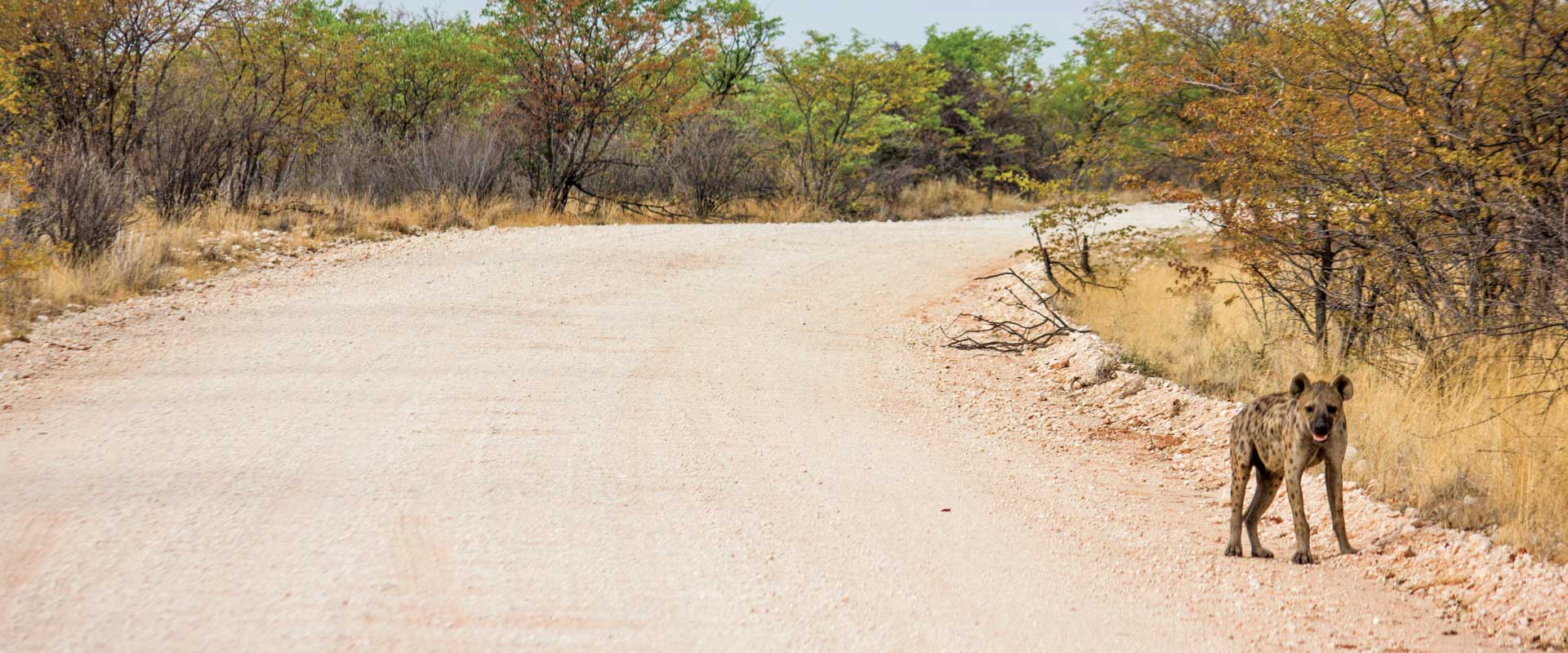
Wild wild western Etosha
April 12, 2016
The Lagoon Five – Namibia’s coastal Big Five
April 14, 2016Text and photographs Annabelle Venter
| Main photo: Ndjimbu (hand axe) amongst woodshavings
Wooden carvings have been a take-home souvenir from Namibia for as long as I can remember. I was thrilled back in 1988 to find just the right drum for my boyfriend (now hubby) in Rundu, and yes, we still have it! Giraffes of all shapes and sizes fly on Air Namibia all the time, albeit often rather large for cabin luggage. But space is always found because you simply can’t go home without one bubble-wrapped!
S o who are the people who make this seemingly endless supply of giraffes and other wooden delights? I decided to stop in nearby Okahandja, where there are two markets, to find out. After briefly perusing them both, I see carvers at only the southern one, having a tea break under a tree. I ask if I may join them and they produce a beautiful round chunk of wood, inviting me to sit down.
Titus, Johannes and Paulus gather round and tell me that they are from the Kavango Region up north and their home language is Chokwe. All of them speak excellent English which makes for smooth communication. They live in the nearby locations just outside Okahandja with their families and try to visit extended family in the Kavango whenever the sales have been good. Clearly they miss their homes up north, a sub-tropical area of big trees and a permanent river where they can fish and enjoy village life.
Titus explains that they source the wood that they use from local businesses and residences. When a tree is felled in town they are notified and must make their own arrangements to get it to their carving workshop here. Back home in Kavango their families still use the Kiaat, or wild teak, and Rosewood, both of them local hardwood trees. The sustainability of using these slow-growing trees for an ever-growing market has often been questioned, and now the carvers in Okahandja have switched to the Prosopis tree. This originally Mexican tree has many uses and is an alien invasive species in Namibia.
Paulus explains that Prosopis is used by choice these days as it is easier to carve, heavier, stronger and readily available. Occasionally they find a gum tree, but they point out that the wood cracks too easily and is only good for making large stools.
In the mornings they examine pieces of wood and decide what needs to be made from it. If a tall giraffe is to be made that day, they choose a piece with the right proportions. Paulus is busy carving a three metre giraffe for a client. It will take two weeks to complete and sell for N$ 1500. Some days they choose to make smaller giraffes or elephants which are the most popular items, and they are able to complete about five in one day! Hippos are also very popular and bowls remain a firm favourite.

Johannes Paulus and his 3 meter giraffe

Breadboards

Mokoros remind the carvers of home in the Kavango

Goatskin stool or Chakakuka

Johannes Frans demonstrates how to carve a wooden ladle

Titus Tjisepo carves an elephant from prosopis wood
Titus says his father taught him to carve when he was little, and the first thing he made was the handle of an axe, called ndjimbu. Undoubtedly this is the most important skill to learn, since this is the tool they use for their craft. Extremely sharp, I notice, they are all laid carefully under a tree, covered with cloth and weighted down while they have tea. Paulus explains that they do this so that the children don’t see them! These hand axes are a traditional design, used for carving as well as tree felling, depending on which way you insert the blade. With an expert flick of the wrist the blade comes loose and falls out, but it will not come loose while working.
Paulus goes off to find an example of the very first piece he ever carved – a small square stool covered in goatskin, called chakakuka. Johannes is quick to show me the first style he learnt: a wooden spoon and ladle. All essential and useful items, this is how the art of wood carving started. Out of necessity came the creation of objects used in daily life, eventually turning into a business.
But business is slow today and they tell me that January to March is a quiet time, since it is the low season for visitors. When it isn’t too hot they work from around 7am until 5pm. The site is government property and they can purchase water on-site with a meter-card.
When I ask Paulus if the prices for various pieces are set, he shakes his head. The price of every single item has to be negotiated and often tourists underestimate the effort and time required to create a piece. He says that they have no choice but to accept the price they are offered. For this reason the men are keen to seek other outlets for their work.
Visit the Namibia Woodcarvers Market on the southern side of Okahandja for your Namibian souvenir.
This article was first published in the Autumn 2016 issue of Travel News Namibia.


